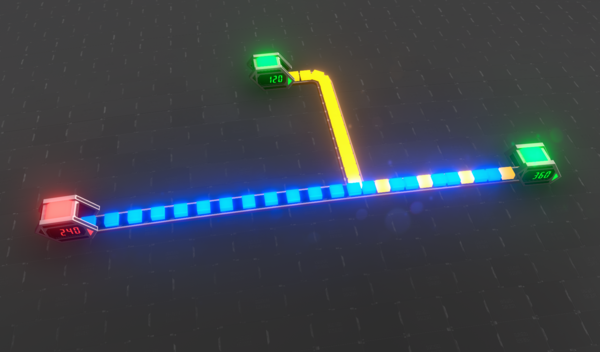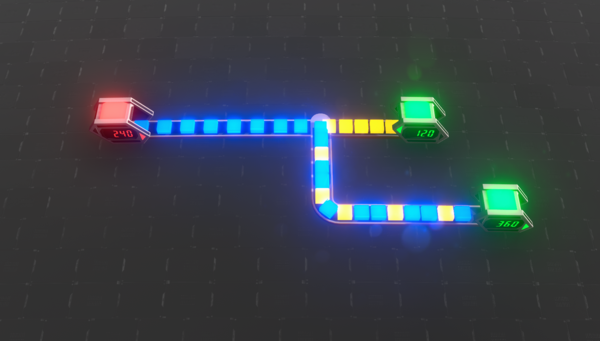No edit summary |
m (Changed image orientation, I hope.) |
||
| Line 7: | Line 7: | ||
It can be used to solve Issues with Hydrogen Priority, ensure saturation of [[Fractionator|Fractionator Loops]], create Sushi Setups that do not jam or just to merge multiple Belts in general. | It can be used to solve Issues with Hydrogen Priority, ensure saturation of [[Fractionator|Fractionator Loops]], create Sushi Setups that do not jam or just to merge multiple Belts in general. | ||
[[File:T Junction Example.png|left|thumb|600x600px|Correct T-Junction, forcing priority and seamless merging. ]] | [[File:T Junction Example.png|left|thumb|600x600px|Correct T-Junction, forcing priority and seamless merging. ]] | ||
| Line 23: | Line 24: | ||
A junction as seen in the following examples force no clear priority, and can result in reduced Conveyor Belt throughput. | A junction as seen in the following examples force no clear priority, and can result in reduced Conveyor Belt throughput. | ||
[[File:T- | |||
[[File:T-Bone_Junction.png|alt=T-Bone Junction, two Belts colliding head on. Results in rather random scrambling.|frameless|600x600px]] | |||
Revision as of 20:16, 29 February 2024
Summary
The T-Junction is a junction of two belts by joining one into the side of another. The T-Junction provides utility for the factory design since it provides alternative means to force belt priority.
Proper T-Junction
The proper T-Junction, as seen in the image below, ensures that items on the straight Conveyor Belt (Blue) get flow priority over the one joining into it (Yellow).
It can be used to solve Issues with Hydrogen Priority, ensure saturation of Fractionator Loops, create Sushi Setups that do not jam or just to merge multiple Belts in general.
Faulty T-Junctions
If Belts are merged in their corner, or when they collide head on, the behavior changes drastically.
A junction as seen in the following examples force no clear priority, and can result in reduced Conveyor Belt throughput.

